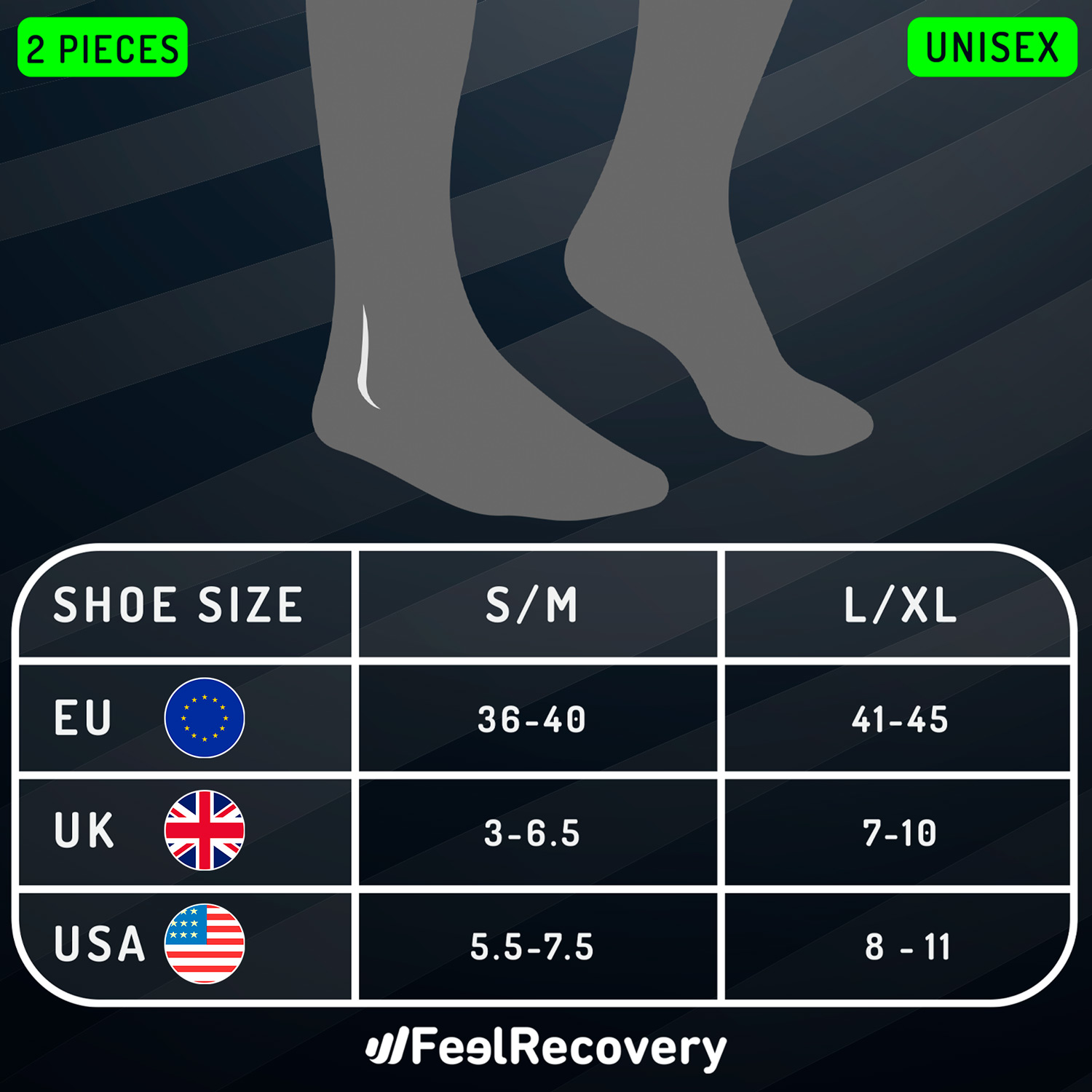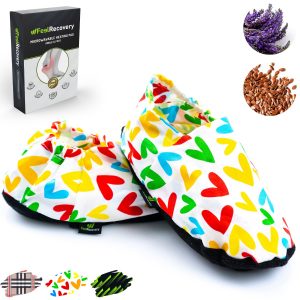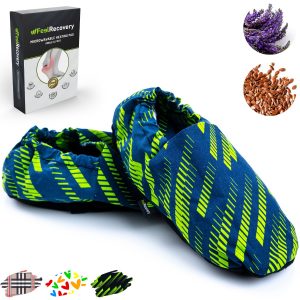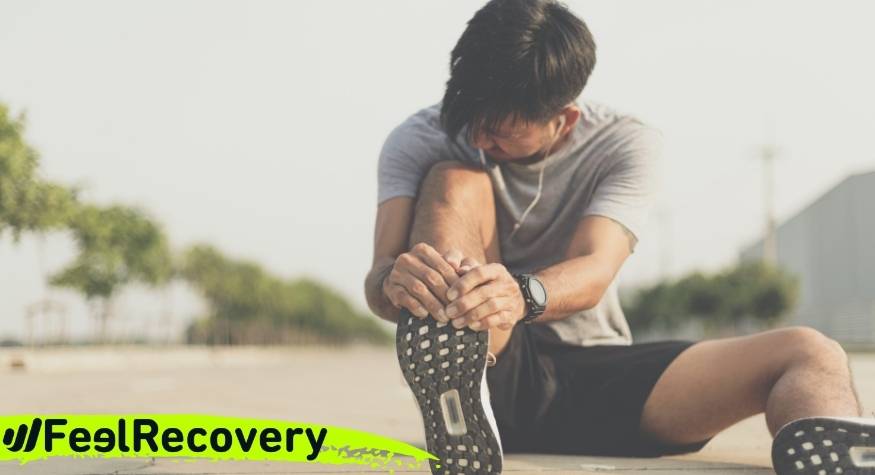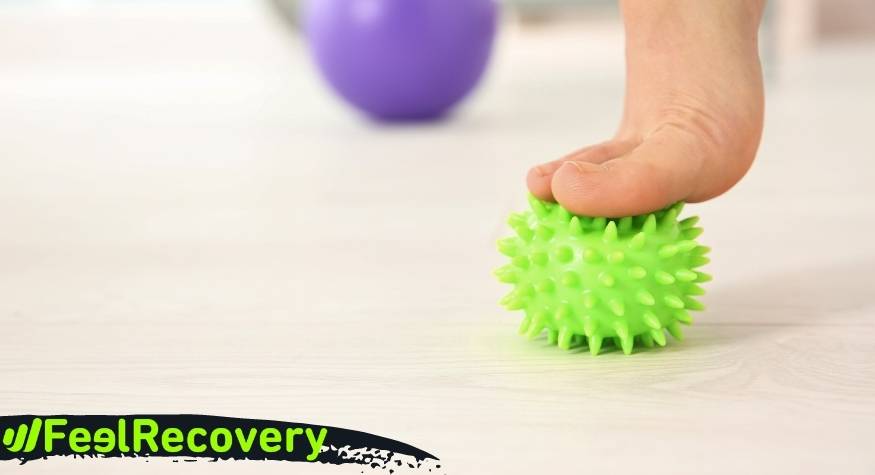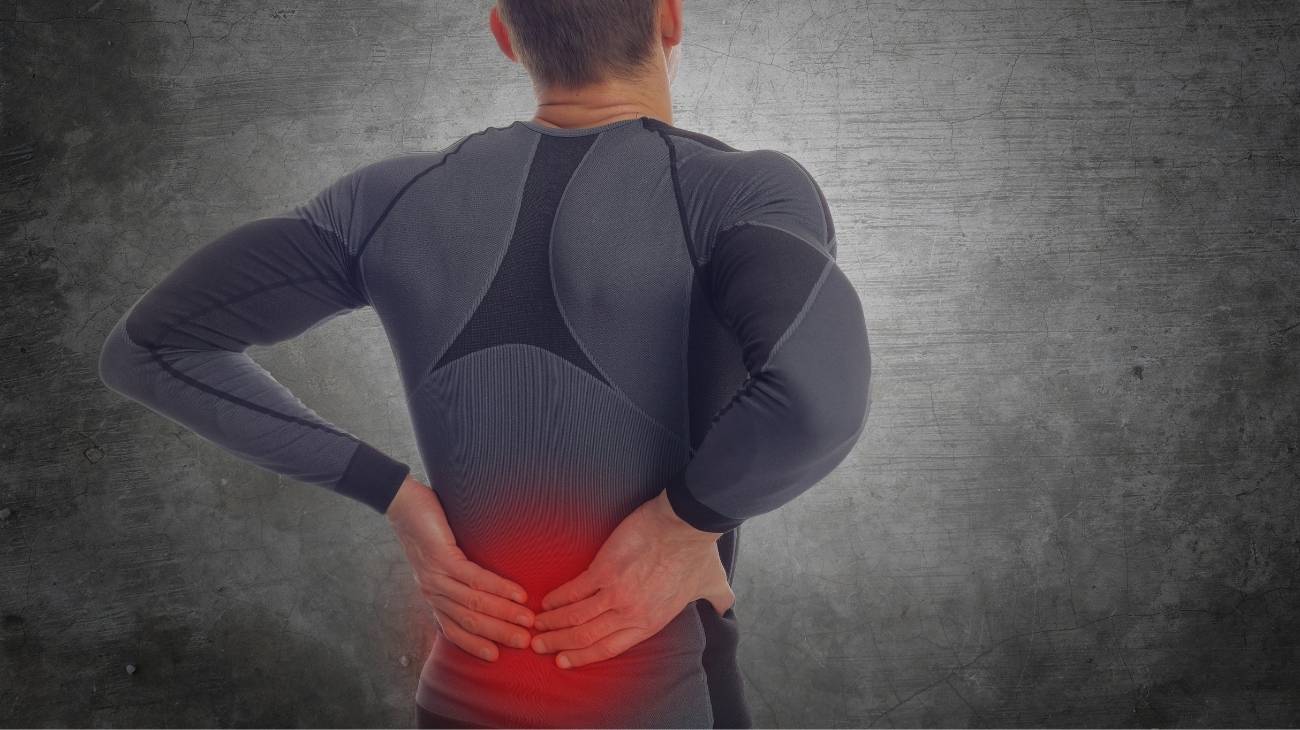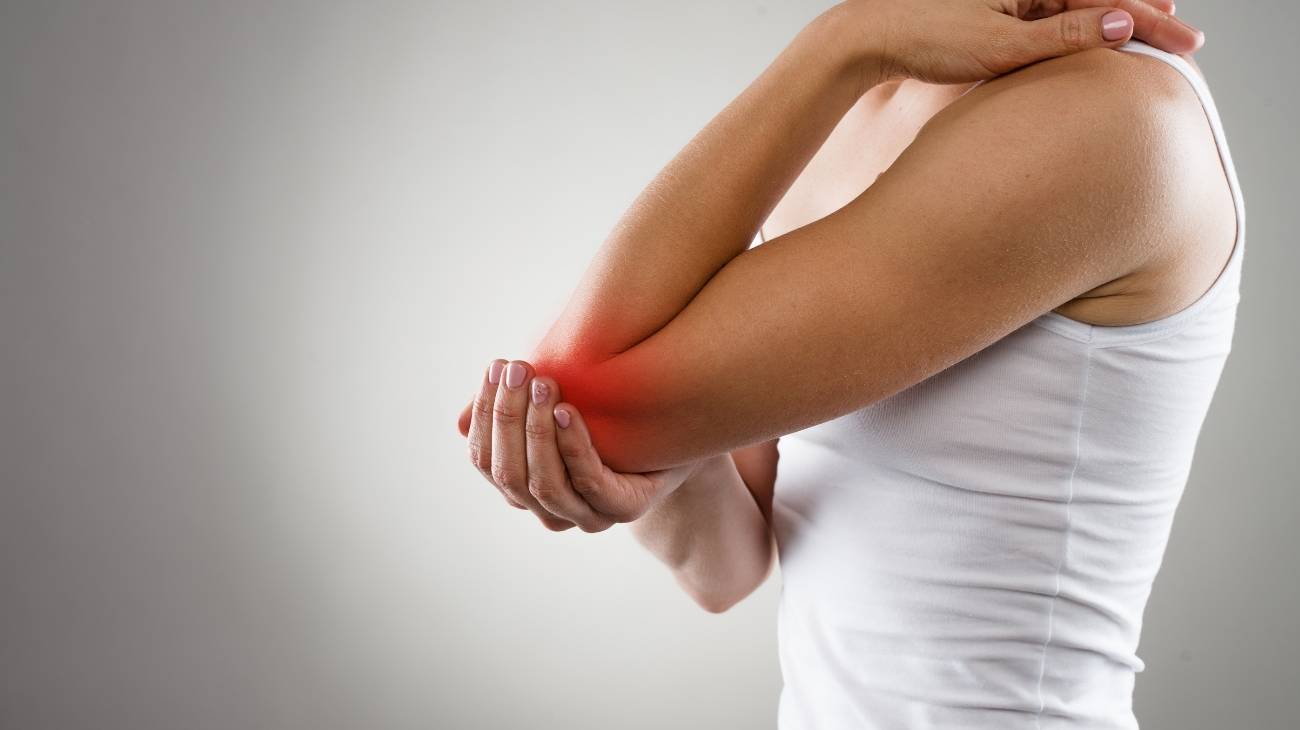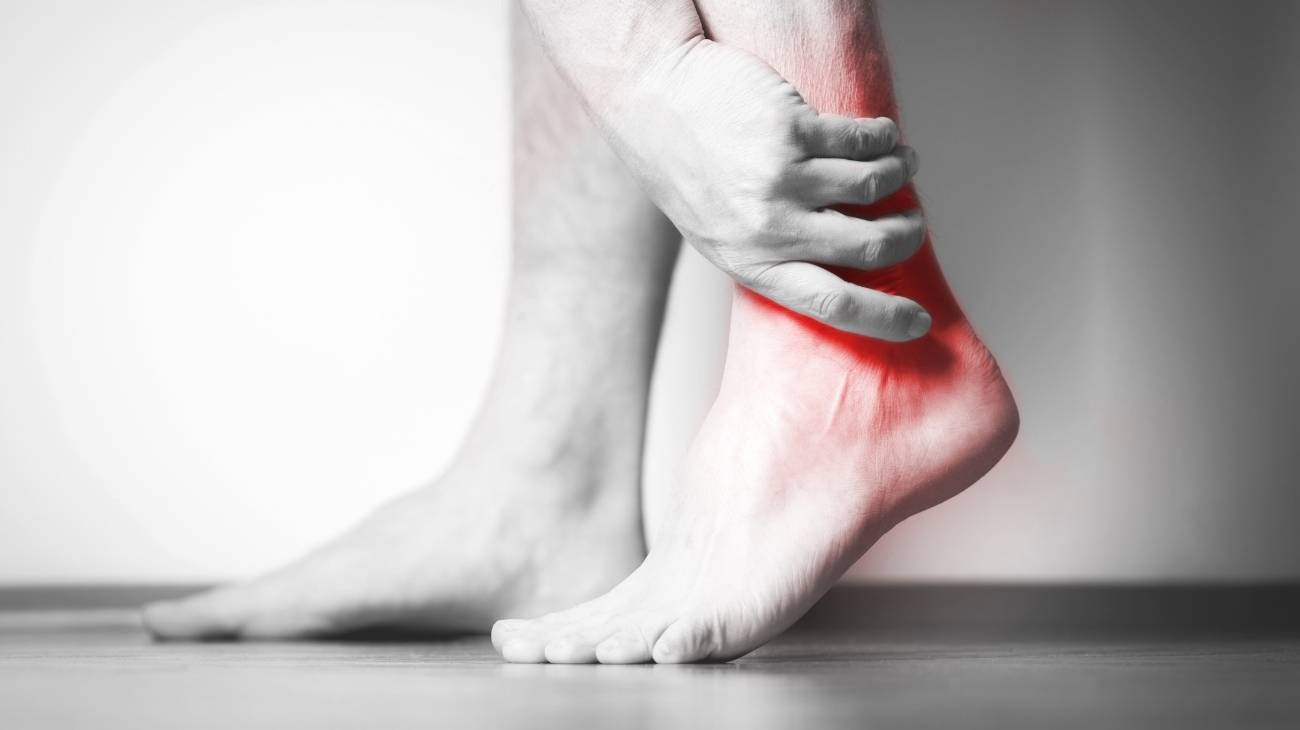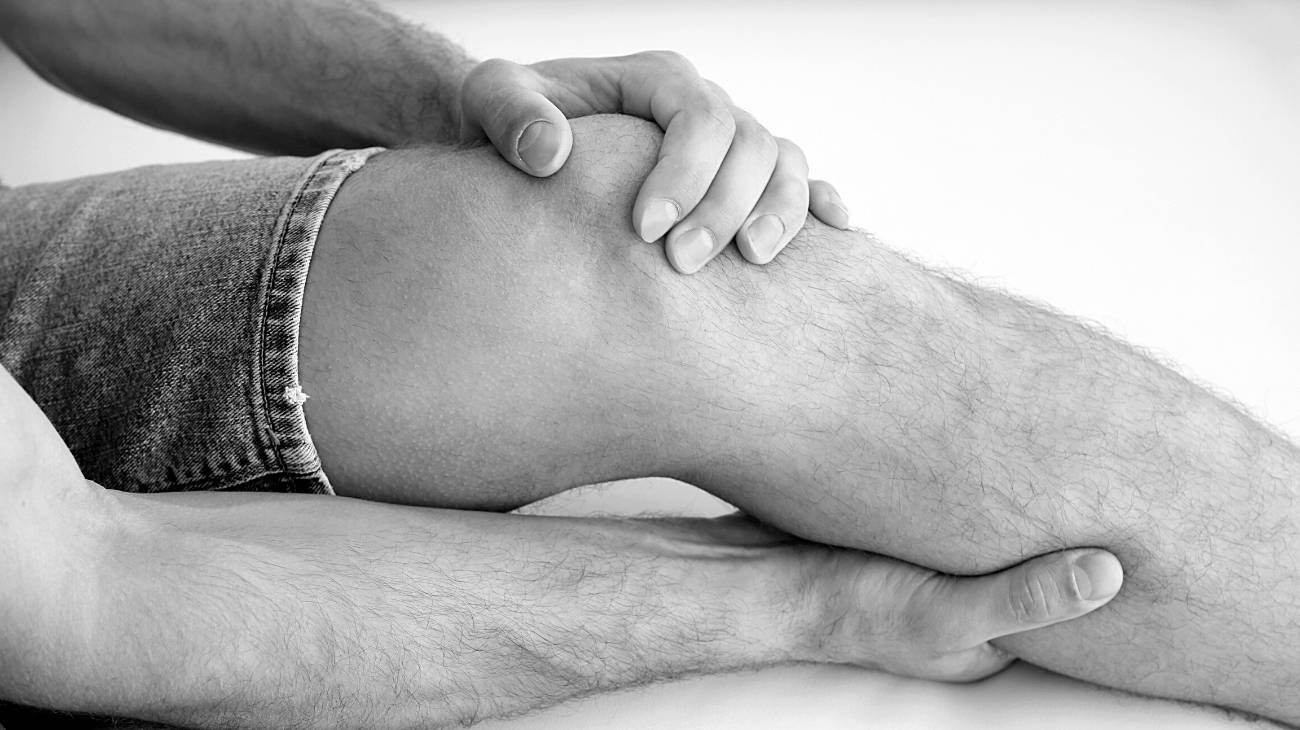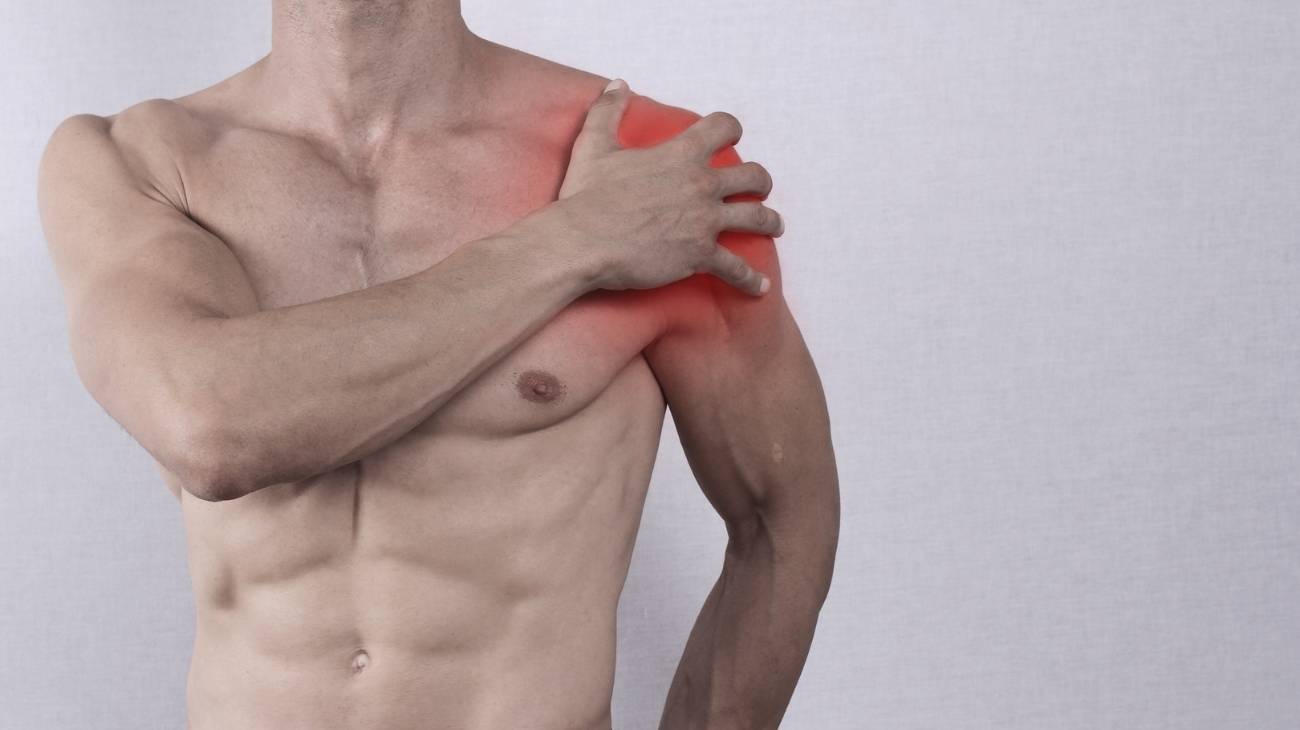- What is a foot sprain and what are the degrees?
- What are the causes and risk factors for foot sprains?
- Best products for foot sprain
- Main symptoms that warn us of a sprained foot
- What treatments are available to improve the symptoms of a sprained foot?
- Which prevention methods for foot sprains are the most effective?
Ligaments are the bands of tissue that support joints throughout the body. So when they are stretched beyond their capacity or when a joint is placed in an abnormal position, they can cause sprains or strains and trigger different symptoms.
Although several types of sprains are distinguished, certainly one of the most common is the foot sprain. Thus, given its importance, it is appropriate to know what it consists of and what levels of severity it can reach, as well as its causes, signs, treatments and ways of prevention in order to protect the joint from strain.
What is a foot sprain and what are the degrees?
Basically, a foot sprain consists of an injury or sprain that causes damage to the fibrous cords that form the ligamentous portion that connects the bones located in the foot area. It is a condition that is caused by a partial or total tear and produces considerable pain, inflammation and other discomfort in the lower extremity of the human body.
Sprained feet are usually caused when a person engages in certain physical activities in which their body turns while their foot does not rotate in the same direction. However, in order to treat this pathology, first of all, it is important to define the level of severity in order to formulate the appropriate methods of care.
Among this classification, the following levels stand out:
Grade 1
This consists of a mild sprain caused by a forced overstretching of the ligaments that join the bones of the ankle, but without rupturing them. As a result, the pain experienced by the patient is minimal, the swelling is mild and there is no joint laxity associated with the injury. As a result, full movement is possible, treatment is simple and the recovery process is rapid.
Grade 2
In this case, it corresponds to a moderate foot sprain. Because there is a partial rupture of the ligamentous tissue (either 50% or less), and as a consequence, the pain is greater compared to a grade 1 sprain. In addition, the inflammatory process is accentuated, bruising appears in the impacted area and it is possible that it shows some deformation. Therefore, weightless joint instability is reported.
Grade 3
This is characterised by triggering the tearing of the ligamentous area (one or more ligaments) in its entirety. Thus, it is the most severe foot sprain of all and triggers a more acute pathological state. It causes severe pain, exuberant swelling, deformity and ecchymosis, as well as a penetrating functional impotence of the joint. In this case, the rehabilitation process is slow and can take up to 8 weeks.
What are the causes and risk factors for foot sprains?
As mentioned in the previous part, specifically, foot or toe sprains are propagated when a person's body rotates and their limb does not rotate at the same time, resulting in a tear or sudden stretching of the bands of tissue. However, behind this motive, there are numerous causes and risk factors that proliferate such an injury and externalise the symptomatological picture of a foot sprain.
The most common causes of foot sprains are outlined below:
- It is usually an injury that manifests itself when the patient exercises on uneven surfaces or terrain.
- If there is a fall in which the person mistakenly knocks down a foot or twists the ankle, a foot sprain is also likely to be present.
- Hard stomping or stepping directly on the foot by other people, especially during sporting activity, is another major cause of sprains in this part of the body.
- Traumatisms or direct blows to the foot, in the majority of cases, produce this pathological condition.
- Wearing inappropriate footwear also increases the chances of a foot injury of this category. Either because the shoe does not fit these extremities properly, because it is a high-heeled shoe or because it is not suitable for a particular sporting activity.
- People who are obese or overweight are at greater risk of spraining their feet or any region of the lower limbs.
- Another danger for sprained feet is age. As the years go by, joints show more wear and tear and as a consequence are more prone to injury.
- If a person is not in good physical condition, of course, there is a deficit of strength and flexibility in muscles, ligaments and tendons, so sprains or other traumas can easily be triggered.
- When a person does not warm up and stretch properly before (and even after) physical activity, it is likely that an injury will develop that affects the ligamentous portion of the joint and thus, the joint.
- A common risk factor for foot or ankle sprain is based on the shape of the patient's foot. Because of their nature, the varus foot, rearfoot valgus, forefoot cavus and Achilles tendon are more likely to be strained.
- People who have previously suffered a foot injury are two to three times more likely to get a sprain in the same area.
Best products for foot sprain
Bestseller
-
2 Ankle Compression Sleeve (Black/Gray)
£17,50 -
2 Ankle Compression Sleeve (Green/Navy)
£17,50 -
2 Ankle Compression Sleeve (Pink/Bordeaux)
£17,50 -
Acupressure Mat and Pillow (Black/Gray)
£44,95 -
Acupressure Mat and Pillow (Green/Navy)
£44,95 -
Acupressure Mat and Pillow (Pink/Bordeaux)
£44,95 -
Acupressure Pillow (Black/Gray)
£21,52 -
Acupressure Pillow (Green/Navy)
£21,52 -
Acupressure Pillow (Pink/Bordeaux)
£21,52 -
Foot Massage Roller for Plantar Fasciitis (Black)
£17,50 -
Foot Massage Roller for Plantar Fasciitis (Green)
£17,50 -
Foot Massage Roller for Plantar Fasciitis (Pink)
£17,50 -
High Density Foam Roller for Muscle (Black/Gray)
£24,95 -
High Density Foam Roller for Muscle (Green/Navy)
£24,95 -
High Density Foam Roller for Muscle (Pink/Bordeaux)
£24,95 -
Ice Massage Roller Ball (Black)
£34,95 -
Ice Massage Roller Ball (Green)
£34,95 -
Ice Massage Roller Ball (Pink)
£34,95 -
Ice Pack for Foot - Cold Therapy Socks (Black)
£21,95 -
Ice Pack for Foot - Cold Therapy Socks (Green)
£21,95 -
Ice Pack for Foot - Cold Therapy Socks (Pink)
£21,95 -
Microwavable Heated Slippers (Hearts)
£21,50 -
Microwavable Heated Slippers (Oxford)
£21,50 -
Microwavable Heated Slippers (Sport)
£21,50 -
Microwaveable Wheat Bag for Pain Relief (Hearts)
£17,50 -
Microwaveable Wheat Bag for Pain Relief (Oxford)
£17,50 -
Microwaveable Wheat Bag for Pain Relief (Sport)
£17,50 -
Pack 2 in 1: Foam Roller High + Soft Density (Black/Gray)
£24,95 -
Pack 2 in 1: Foam Roller High + Soft Density (Green/Navy)
£24,95 -
Pack 2 in 1: Foam Roller High + Soft Density (Pink/Bordeaux)
£24,95 -
Soft Density Foam Roller for Recovery (Black)
£24,95 -
Soft Density Foam Roller for Recovery (Green)
£24,95 -
Soft Density Foam Roller for Recovery (Pink)
£24,95 -
Sport Compression Socks (1 Pair) (Black/Gray)
£17,50 -
Sport Compression Socks (1 Pair) (Green/Navy)
£17,50 -
Sport Compression Socks (1 Pair) (Pink/Bordeaux)
£17,50
Main symptoms that warn us of a sprained foot
In order to differentiate a sprained foot from other similar injuries, it is important to evaluate the patient's symptoms. In addition to the signs typical of this type of condition, it is appropriate to find out what level of severity it is at, and this can also be done on the basis of the symptoms.
Thus, we detail the main manifestations that develop as a result of a sprained foot:
- Intense pain in the foot after the sprain: Depending on the degree of severity, the discomfort may be more or less severe.
- Inflammation or swelling: Because, once the sprain develops, the main deformity seen in the affected region is based on an inflammatory process.
- Localised bruising or bruising: (changes in the colour of the skin of the lower limb). This is because it is possible that a blood vessel in the area may rupture.
- Possible difficulty of movement: Depending on the seriousness of the injury, the mobility of the foot is reduced and in the most severe cases, the sprain results in total paralysis of the impacted joint.
- Feeling of warmth or increased temperature in the foot: In the event of a severe sprain, one of the body's main reactions is to increase the temperature in the injured area, and this normally decreases as the hours go by.
- Inability to bear weight on the affected foot: Since the region and its surroundings will be very sensitive to any incentive.
- If the foot sprain relapses or worsens, symptoms such as: numbness or coldness below the injury (especially in the toes), pale or bluish skin on the limb and intensified pain.
What treatments are available to improve the symptoms of a sprained foot?
Fortunately, there are numerous ways to treat a sprained foot in order to improve the symptoms and thus accelerate the patient's rehabilitation process so that he or she is able to normalise the functioning of the joint. Whether with complementary therapies, inherent remedies, healthy habits, nutritional supplements, physiotherapeutic treatments and/or prescribed medications.
For this reason, depending on the individual's capabilities, the following methods can be used to assist with a foot injury:
Alternative and complementary therapies
Due to their optimal results in minimising the pain generated in the foot by a sprain and regulating its ability to move, at this time, some specific alternative therapies are recommended that provide an analgesic, anti-inflammatory and relaxing effect to soothe the discomfort caused by a sprain, by default.
Accordingly, it is advisable to implement the following:
- Heat and cold therapy: This is a treatment that uses the properties of heat and cold to expel the main symptoms of a sprain. Since heat helps to increase blood circulation and cold has the ability to reduce inflammation and relieve pain, it is used to improve musculoskeletal pathologies. In this case, cold therapy should be started for the first 48 to 72 hours, applying compresses or an ice pack to the foot for 15 to 20 minutes every 3 to 4 hours. Subsequently, after two or three days, it is appropriate to apply heat with gel packs or compresses and alternate with cold.
- Compression therapy: This is a therapy that, using an elastic element to exert controlled pressure on some part of the body, focuses on regulating the functioning of the vascular wall and reducing the blood supply in order to mitigate the pain present. Consequently, to relieve a foot sprain, patients can wear orthopaedic compression stockings that reinforce the veins and optimise metabolism in the tissues. On the other hand, an elastic bandage or a compression ankle brace can also be used.
- Natural remedies using plants: Natural medicine that provides numerous inherent remedies is also estimated as a useful formula to improve the symptoms caused by a tear in the lower extremities. Considering that, it employs plants with properties suitable for combating pain and inflammation when one or more ligaments are afflicted. Thus, it is worth considering the following natural remedies that hasten the rehabilitation of patients: soaking the area with cayenne pepper and warm water, using a clay poultice every night, applying turmeric with water, rubbing the foot with arnica essential oil and taking infusions of ginger, rosemary, horsetail, celery, birch or eucalyptus.
- Healthy lifestyle habits: Having certain healthy habits and practising them day after day is vital to lessen a foot sprain and even avoid it as much as possible. In view of the fact that these habits help the organism to function with total vehemence, so that it has the capacity to obstruct the appearance or development of different pathologies. In that sense, to improve or prevent a sprained foot, it is suggested: Doing physical activities every day gradually and without overdoing it, avoiding a sedentary lifestyle and obesity, strengthening the joints with appropriate stretching, eating food rich in vitamins, proteins and minerals, as well as wearing suitable shoes for each occasion.
Dietary supplements
Due to their properties full of vitamins, minerals, proteins, enzymes, amino acids and herbs, food or nutritional supplements are appropriate for people's bodies to guarantee an optimal general wellbeing, as they will not present deficits of essential substances to carry out all their processes correctly.
The following food supplements are recommended in conjunction with a healthy, balanced diet to treat pain, reduce swelling and promote joint care, naturally:
- Phosphorus: This refers to a nutrient or mineral that is vital to every cell in the human body. It aims to maintain bone strength by working in conjunction with calcium and is therefore considered relevant to the growth, maintenance and repair of tissues and cells. For this reason, it offers improvement after a sprain in the foot and/or lower limbs, and it also helps to soothe muscle pain. Its main food sources are: lean beef and pork, cheese (Parmesan, Romano and goat's cheese), fish (cod, salmon or white fish), products rich in soya, nuts (almonds, walnuts and cashew nuts), etc.
- Collagen: Collagen is a substance that helps repair damaged ligaments and tendons, promotes joint health, improves joint mobility, comforts bones, reduces pain and reduces inflammation. It is therefore an optimal solution to improve the various symptoms caused by a sprained foot. It is therefore ideal for patients with sprains to consume collagen through: cheese, milk, eggs, meat, oily fish, gelatine, nuts, avocado, celery, onion, cherries and strawberries, for example.
- Calcium: This is a substantial mineral in the human body which, as well as promoting the vitality of bones and helping to prevent them from breaking, also allows the body to rebuild ligamentous tissue more quickly and efficiently when sprains or strains occur. Thus, during the rehabilitation process of a foot strain, it is appropriate to consume calcium-rich foods such as nuts (almonds, hazelnuts and walnuts), dairy products (milk, cheese and yoghurt), sardines, salmon, oranges, apricots, figs, currants, red beans, kale and broccoli.
- Hyaluronic acid: Medically, hyaluronic acid is a substance used to treat joint pain and stiffness through injections or transfusions to stimulate rehabilitation from lower extremity injury. However, patients can also naturally consume hyaluronic acid to optimise the functional state of the joint that was impacted during the sprain. In this case, the most recommended foods are: whole grains, brown rice, starchy tubers, beef, lamb, veal, duck, turkey, yeast, coriander, profile, red and green peppers, peanuts, beans, etc.
- Vitamin C: It stands out as an essential element in maintaining the health of ligaments and tendons throughout the human body, as it has a significant influence on the synthesis of high-quality collagen in the body. In addition, it strengthens the immune system and whenever an injury occurs that alters the joints, it also provides an anti-inflammatory and analgesic effect so that they can function normally again. Basically, foods rich in vitamin C are: oranges, guava, melon, pineapple, kiwi, papaya, grapefruit, potatoes, red and green peppers, spinach, cabbage, cauliflower and broccoli.
Physiotherapy treatments
Physiotherapy is a branch of health sciences which, with the aim of restoring function to different parts of the body or preventing its complete loss, uses physical agents or natural elements to promote an optimal recovery process. Consequently, to improve joint mobility after a foot sprain, it is advisable to include physiotherapy treatment in the patient's rehabilitation plan.
For this, the physiotherapist, who is the health professional trained to practice the different exercises proposed by physiotherapy, must analyse the case of each person in detail, to define the number of sessions and/or exercises required to reduce inflammation, obtain normal mobility, recover the injured tissue, re-establish the range of movement and stimulate the person's stability. All this, depending on the level of severity of the condition and its conditions.
Some of the most common alternative exercises to care for and strengthen the feet are:
- Toe extension: Find a comfortable chair, sit upright in it and place the afflicted foot on the opposite thigh. Then, with one hand, grasp the toes and pull them towards the ankle (until you feel a stretch at the bottom of the limb and the heel cord). With the other hand, massage the arch of your foot during the stretch and hold for 10 seconds. It is recommended to do 10 repetitions for each foot.
- Grab the towel from the floor: This is an exercise that strengthens the muscles on the top of your feet and toes. To implement it, you have to sit down and place a small towel on the floor in front of you. Then, place the toes of one foot on the end of the towel and proceed to crumple them so that you can pull the towel towards you. With each foot, repeat this 5 times.
- Separation of the toes: The patient should sit in a comfortable chair and after that, separate all the toes of his foot as far as he can to maintain that position for 5 consecutive seconds and repeat 10 times in each extremity. Through such a movement, you will be able to gain control over the muscles of the toes of the affected foot.
- Achilles Stretch: Stand facing a wall and extend the palms of your hand towards the wall. Next, place one foot behind you with your knee straight and bend it over the other leg (both heels must be flat on the floor). Then bend forward from the hips until you feel a stretch in your calf muscle and Achilles tendon. Hold the stretch for 30 seconds and repeat the movement three times to change legs.
- Pick up items with your foot: Find 20 marbles or small balls (or other objects of a similar size) and have a container in front of you. Once you are sitting on a chair, with your toes, start to pick up the marbles one by one and put them in the container. When you finish, repeat the same exercise with the other foot. Through this practice, it is possible to strengthen the muscles of the lower part of the foot and toes.
- Proprioceptive exercises: This training aims to optimise the responsiveness of the foot and ankle to falls, jumps, twists, imbalances and other similar stimuli that tend to cause injury. As a result, the body will feel prepared to respond correctly and minimise the consequences of a sprain or strain. It is therefore also indicated to prevent such a tear from developing.
Medications
Most patients who suffer a foot sprain, instead of going to the doctor, start self-medicating with over-the-counter drugs (paracetamol, ibuprofen or naproxen, for example) to reduce the ailment that has triggered this pathology.
However, this is one of the most harmful practices that people can engage in, as it tends to produce some side effects, such as: dizziness, fainting, nausea, vomiting, diarrhoea, fatigue, drowsiness, addiction or even cardiac arrest.
If the discomfort persists after the sprain, it is best to visit an orthopaedic specialist who can diagnose the condition more closely, which is usually done through the use of the following tests:
- Physical examination: First of all, you will examine the foot and lower leg. If the injury allows, the doctor will touch the skin around the sprain to look for points of mild pain and perform movements to check the range of motion. He or she may also perform stress tests.
- Imaging: To provide a more concise diagnosis, the doctor may perform one or more imaging scans to further evaluate the extent of foot damage and rule out associated structural damage. This may be X-rays, ultrasound, computed tomography (CT), magnetic resonance imaging, etc.
Under this, the patient will be able to undergo an indicated treatment that will accelerate the rehabilitation process of the foot after the sprain. Based on the established diagnosis, the health professional will prescribe the appropriate medications to attack the condition and eliminate the different discomforts that exist. To this end, it is valuable to consider certain references with the aim of preventing the externalisation of any collateral effects that could put the patient's health at risk.
Such data usually correspond to:
- Medical history of the person.
- Tolerance to drugs or possible allergies.
- General state of health.
- Degree of severity of the injury.
- Age
Surgery
When a first- or second-degree sprain occurs, patients usually undergo various non-surgical treatments that lead to full recovery of the joint. However, in the case of a third-degree sprain that results in a complete rupture of one or more ligaments, surgery is often necessary.
This is because it is difficult to remedy a foot that remains unstable, even after treatment with various therapies, remedies and medications. Therefore, once a sprain has reached its highest degree of severity, it is appropriate to perform an operation as soon as possible, whereby the ligament can be reconstructed with tissue from another nearby area or the non-healing portion of the ligament can be completely repaired. After that, it is essential that the patient rests completely, because it will take up to 8 weeks or more for the ligaments to heal.
Which prevention methods for foot sprains are the most effective?
Fortunately, foot sprains can be prevented by various methods of care that help to hinder the development of such an injury, as long as an accident or sudden eventuality does not occur.
In order to reduce your risk of sprains, we recommend the following:
- Do physical activity slowly and steadily: Thanks to this, you will be able to maintain a good physical condition, strengthen your joints and tone your muscles, so that they are more resistant. This is as long as you make sure you do sport gradually to avoid overexertion that your body cannot cope with.
- Warm up and cool down: Another useful indication to prevent this type of injury is to warm up and/or stretch before undertaking any physical effort and even after. This will help to prevent the development of sprains due to inadequate effort.
- Wear the most appropriate footwear: It is also important to wear shoes that fit well on your feet and/or fit perfectly, exerting the appropriate pressure on the limb. In addition, to avoid foot sprains, it is recommended not to wear high heels frequently.
- Practice stability and balance exercises: Through this, you can develop proprioception or the ability to regain your balance naturally in order to optimise your stability. This is helpful in preventing foot sprains from being triggered by intemperate movements.
- Be careful when walking on uneven surfaces: In case you need to walk or run on an uneven or uneven surface, it is valuable to be as careful as possible and avoid making improper movements.
- Maintain a healthy body weight: Don't forget to maintain a balanced body weight, because obesity or being overweight increases the likelihood of lower limb sprains.
- Avoid participating in unfamiliar extreme sports or games: If you don't know how to play a particular sport or physical activity, it's best not to participate until you feel fully prepared. Otherwise, you may suffer falls or blows that result in a tear in your feet (or other areas).
References
- Denyer, J. R., Hewitt, N. L., & Mitchell, A. C. (2013). Foot structure and muscle reaction time to a simulated ankle sprain. Journal of athletic training, 48(3), 326-330. https://meridian.allenpress.com/jat/article/48/3/326/111341/Foot-Structure-and-Muscle-Reaction-Time-to-a
- Brief, J. M., Brief, R., Ergas, E., Brief, L. P., & Brief, A. A. (2009). Peroneal Nerve Injury with Foot Drop Complicating Ankle Sprain. Bulletin of the NYU Hospital for Joint Diseases, 67(4). https://pubmed.ncbi.nlm.nih.gov/20001941/
- Man, I. O., & Morrissey, M. C. (2005). Relationship between ankle-foot swelling and self-assessed function after ankle sprain. Medicine & Science in Sports & Exercise, 37(3), 360-363. https://www.researchgate.net/profile/Matthew-Morrissey/publication/7991839_Relationship_between_Ankle-Foot_Swelling_and_Self-Assessed_Function_after_Ankle_Sprain/links/5df0305a299bf10bc351aa59/Relationship-between-Ankle-Foot-Swelling-and-Self-Assessed-Function-after-Ankle-Sprain.pdf
- Abu-Naser, S. S., & MAHDI, A. O. (2016). A proposed expert system for foot diseases diagnosis. http://dstore.alazhar.edu.ps/xmlui/handle/123456789/433
- Milgrom, C., Shlamkovitch, N., Finestone, A., Eldad, A., Laor, A., Danon, Y. L., ... & Simkin, A. (1991). Risk factors for lateral ankle sprain: a prospective study among military recruits. Foot & ankle, 12(1), 26-30. https://journals.sagepub.com/doi/abs/10.1177/107110079101200105
- Choi, B. C., Levitsky, M., Lloyd, R. D., & Stones, I. M. (1996). Patterns and risk factors for sprains and strains in Ontario, Canada 1990: An analysis of the workplace health and safety agency data base. Journal of Occupational and environmental Medicine, 379-389. https://www.jstor.org/stable/44994696
- Vicenzino, B., Paungmali, A., & Teys, P. (2007). Mulligan’s mobilization-with-movement, positional faults and pain relief: current concepts from a critical review of literature. Manual therapy, 12(2), 98-108. https://www.sciencedirect.com/science/article/abs/pii/S1356689X06001226
- Smith, R. W., & Reischl, S. F. (1986). Treatment of ankle sprains in young athletes. The American journal of sports medicine, 14(6), 465-471. https://journals.sagepub.com/doi/abs/10.1177/036354658601400606
- Pellow, J. E., & Brantingham, J. W. (2001). The efficacy of adjusting the ankle in the treatment of subacute and chronic grade I and grade II ankle inversion sprains. Journal of manipulative and physiological therapeutics, 24(1), 17-24. https://www.sciencedirect.com/science/article/abs/pii/S0161475401844961
- Petersen, W., Rembitzki, I. V., Koppenburg, A. G., Ellermann, A., Liebau, C., Brüggemann, G. P., & Best, R. (2013). Treatment of acute ankle ligament injuries: a systematic review. Archives of orthopaedic and trauma surgery, 133, 1129-1141. https://link.springer.com/article/10.1007/s00402-013-1742-5


























